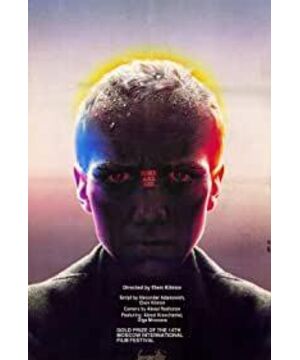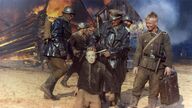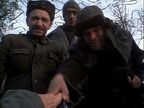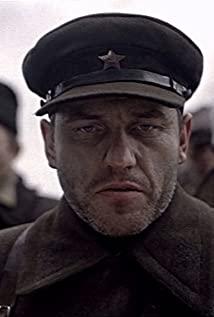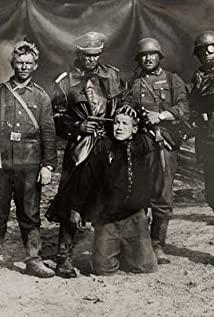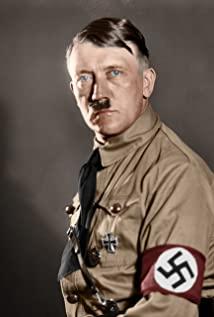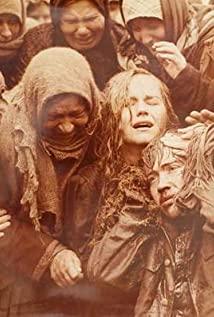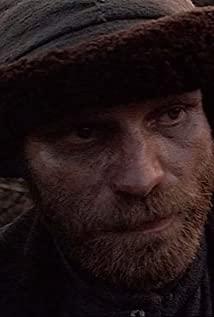①The film tells the story of the young male protagonist of the Soviet Union in the German-occupied area during World War II who became old and mentally damaged after experiencing various brutal acts (the whole family was killed, the whole village was slaughtered, etc.).
②The brutal techniques of movies include but are not limited to:
- Swamp (a visual representation of the character's psychological distress)
- real scene shooting
——Hold the whole time (create a sense of turmoil)
- Massively magnifying the cruelty of cruelty with close-ups and long stares of the camera. For example, the close-up of the eyes of the fallen cow, the fallen father of the male protagonist with charred body, the male protagonist and the little girl playing the harmonica after the German soldiers left.
——The opposition between sound and picture and even the opposition between sound and picture itself. There are many scenes of the German army entering the village, such as: German soldiers eating leisurely and happily inside the picture, children crying outside the picture; German brutality and cheerful soundtrack/radio; Nazis who light cigarettes easily and girls dragged away by their hair; The scene of the German soldiers burning down the warehouse is the climax of this technique. The tragic screams, the wild laughter and applause of the German army, the pictures of atrocities, and the cheerful German soundtrack are all mixed together.
- Contrast montage. For example, there is a section of the violent German army that combines the collapsed face of the male protagonist, the German female soldier eating shrimp, and the burned house.
- A large number of highly subjective intracranial sounds. For example: when the male protagonist met his girlfriend for the first time, the German plane dropped a bomb, we could hear the deafness in his skull that was only a high-decibel noise; the male protagonist was told by the villagers that his whole family was dead , there is a close-up of his face, and we can hear the intense "your whole family killed!" voice inside his skull.
——The episode of the male protagonist being told by the villagers that his whole family is dead is also an "amplification" of the cruel scene to a certain extent (the ubiquitous sadness and the most unwilling privacy are seen by everyone present to), which greatly magnifies the sense of cruelty.
③The male protagonist shoots the montage of the portrait and historical images at the portrait of Hitler, as if the boy is angrily killing Hitler in all forms, whether it is true or false. This highlights his hatred.
④ There are two reasons for giving a 9.5: one is that the film’s portrayal of the Nazis is too illogical and flattened, as if it were the incarnation of pure evil rather than a human being, which is too exaggerated; the other is that the narrative rhythm of the film is somewhat delayed/ Repetitive. A higher score can be given without these two questions.
View more about Come and See reviews


